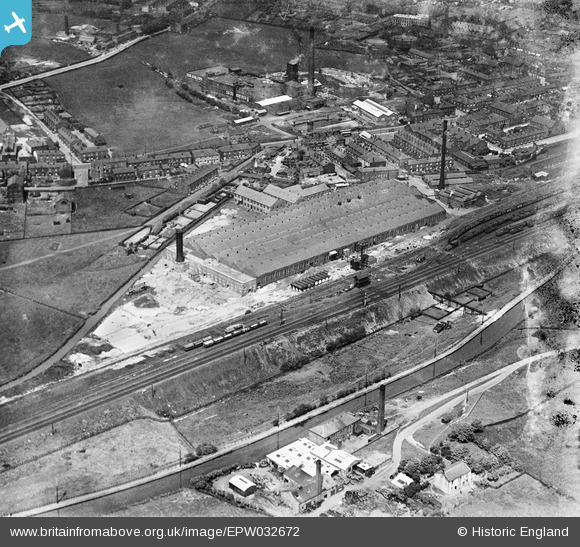EPW032672 ENGLAND (1930). Atlas Artificial Silk, Littleborough, 1930
© Hawlfraint cyfranwyr OpenStreetMap a thrwyddedwyd gan yr OpenStreetMap Foundation. 2025. Trwyddedir y gartograffeg fel CC BY-SA.
Delweddau cyfagos (8)
Manylion
| Pennawd | [EPW032672] Atlas Artificial Silk, Littleborough, 1930 |
| Cyfeirnod | EPW032672 |
| Dyddiad | June-1930 |
| Dolen | |
| Enw lle | LITTLEBOROUGH |
| Plwyf | |
| Ardal | |
| Gwlad | ENGLAND |
| Dwyreiniad / Gogleddiad | 393372, 415984 |
| Hydred / Lledred | -2.1002613077565, 53.640095902521 |
| Cyfeirnod Grid Cenedlaethol | SD934160 |
Pinnau
Byddwch y cyntaf i ychwanegu sylw at y ddelwedd hon!
Cyfraniadau Grŵp
I have been informed that it was actually called Python Mill and was originally an asbestos works but was taken over, it's believed, in the 1920’s by the Dutch company Breda Visada who used the site to produce Cellulose Acetate or Artificial Silk. Ultimately the ownership passed to British Enka who changed the name to British Visada Ltd and eventually closed the factory down in the 1960’s. (Info above courtesy of Littleborough Historical & Archive Society). I have also found information that states that the company produced viscose continuous filament yarn and commenced production in 1932. More digging to be done yet on this. |
 Triggy |
Wednesday 5th of March 2014 09:00:17 PM |
I have received further info from the Littleborough Historical & Archive Society showing a photo of viscose ripening tanks which I think shows that Breda Visada did in-fact produce viscose yarns. My thanks to David Grayson of the Littleborough Historical & Archive Society. |
 Triggy |
Wednesday 5th of March 2014 09:00:17 PM |
Who owned and operated this plant and what was the fibre, Acetate or viscose? |
 Triggy |
Tuesday 4th of March 2014 08:58:37 PM |


![[EPW032672] Atlas Artificial Silk, Littleborough, 1930](http://britainfromabove.org.uk/sites/all/libraries/aerofilms-images/public/100x100/EPW/032/EPW032672.jpg)
![[EPW032670] Atlas Artificial Silk, Littleborough, 1930](http://britainfromabove.org.uk/sites/all/libraries/aerofilms-images/public/100x100/EPW/032/EPW032670.jpg)
![[EPW032671] Atlas Artificial Silk, Littleborough, 1930](http://britainfromabove.org.uk/sites/all/libraries/aerofilms-images/public/100x100/EPW/032/EPW032671.jpg)
![[EPW032677] Atlas Artificial Silk, Littleborough, 1930](http://britainfromabove.org.uk/sites/all/libraries/aerofilms-images/public/100x100/EPW/032/EPW032677.jpg)
![[EPW032675] Atlas Artificial Silk, Littleborough, 1930](http://britainfromabove.org.uk/sites/all/libraries/aerofilms-images/public/100x100/EPW/032/EPW032675.jpg)
![[EPW013232] Spenwood Rubber Works, Littleborough, 1925](http://britainfromabove.org.uk/sites/all/libraries/aerofilms-images/public/100x100/EPW/013/EPW013232.jpg)
![[EPW032676] Atlas Artificial Silk and the Albion Cotton Mill, Littleborough, 1930](http://britainfromabove.org.uk/sites/all/libraries/aerofilms-images/public/100x100/EPW/032/EPW032676.jpg)
![[EPW032674] Atlas Artificial Silk and the railway sidings, Littleborough, 1930](http://britainfromabove.org.uk/sites/all/libraries/aerofilms-images/public/100x100/EPW/032/EPW032674.jpg)